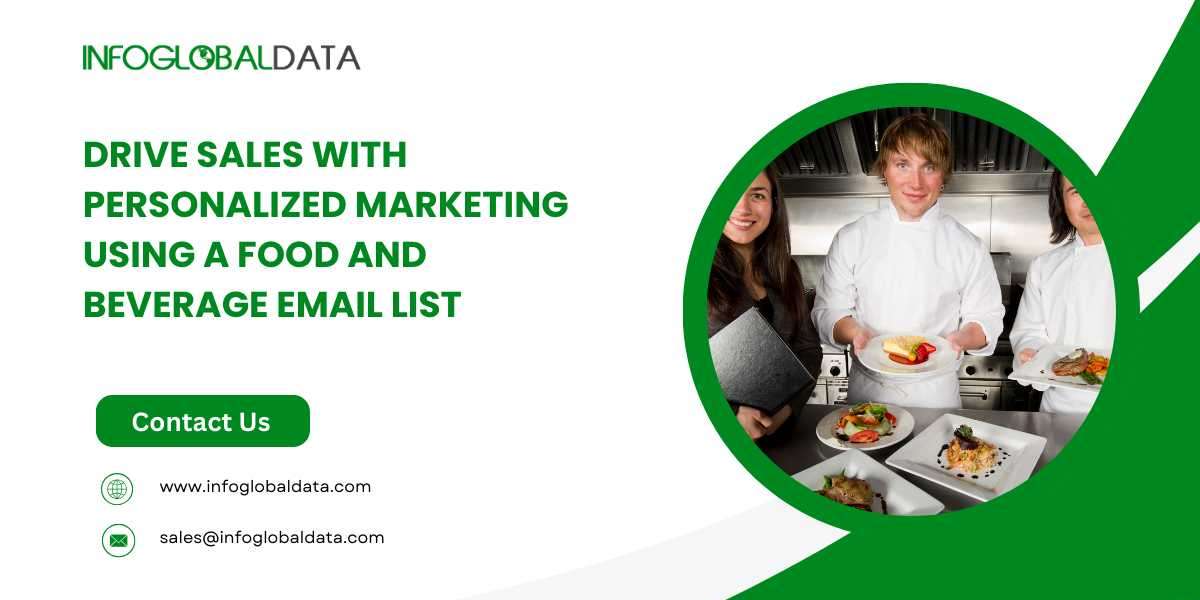Overview of Personalized Marketing
Personalized marketing is a strategy that tailors marketing efforts to meet the unique needs and preferences of each customer. By using data and insights, businesses in the food and beverage industry can craft highly relevant and targeted marketing messages. Utilizing a Food and Beverage Industry Email List, companies can connect on a personal level with their audience, making marketing efforts more effective. This approach helps businesses not only to engage customers but also to enhance the overall customer experience, thereby fostering loyalty and encouraging repeat purchases.
Advantages of Utilizing Email Lists
Email lists enable businesses to communicate with potential customers in a targeted manner. Segmenting the list by demographics, purchase history, or preferences allows for sending content that resonates with each recipient, increasing the likelihood of conversions and enhancing customer satisfaction.
Additionally, email lists are key to building strong customer relationships. Regular communication through newsletters, promotional offers, and personalized messages keeps the brand top-of-mind and nurtures loyalty. This consistent interaction is vital for encouraging repeat purchases.
Email lists also offer cost-effective marketing, as email campaigns are generally more affordable compared to traditional marketing methods. Advanced analytics tools provide insights into customer behavior, helping businesses refine their strategies.
Developing an Email List for the Food and Beverage Sector
Collecting email addresses ethically is essential for building an effective email list in the food and beverage sector. Offering incentives like discounts or exclusive content can motivate potential customers to subscribe. It’s also crucial to comply with privacy regulations to maintain trust. After gathering addresses, organize and manage the list using tools like segmentation, automation, and CRM software. These tools help maintain an updated database and allow for the analysis of customer behavior and preferences. Proper management ensures targeted and relevant communication, enhancing the overall effectiveness of email marketing efforts.
Designing Tailored Email Marketing Campaigns
Using customer data, businesses can create emails that align with individual preferences, purchase history, and demographics. For instance, a coffee shop might send recommendations based on past orders or offer discounts on favorite drinks. Local restaurants have increased reservations by sending personalized birthday offers, making customers feel valued. The key is to focus on what makes each customer unique. By doing so, businesses can send content that truly resonates with their audience, resulting in higher engagement and conversion rates.
Evaluating Email Marketing Effectiveness
To gauge the success of email marketing campaigns, businesses should monitor key performance indicators (KPIs) like open rates, click-through rates, conversion rates, and unsubscribe rates. These metrics offer insights into which aspects of the campaign are effective and which areas need refinement. Analyzing this data helps in making informed adjustments to enhance engagement and achieve better results. For example, if open rates are below expectations, experimenting with different subject lines or send times could boost visibility and interest. Additionally, segmenting the audience and personalizing the content can lead to higher click-through and conversion rates. Using advanced analytics tools can further aid in understanding customer behavior and optimizing future campaigns.
Obstacles and Solutions
Email marketing can face challenges like low engagement, high unsubscribe rates, and deliverability issues. To tackle low engagement, businesses should focus on creating engaging content that appeals to their audience's interests and needs. High unsubscribe rates can be mitigated by ensuring that the content is relevant and not too frequent, offering an easy way to manage preferences. Deliverability issues often stem from poor list management practices; maintaining a clean and updated list can help. Implementing best practices for email design, such as mobile optimization and clear calls to action, can also improve campaign performance. Continuously testing different approaches and monitoring feedback will help identify and resolve issues quickly.
Upcoming Trends in Email Marketing
Emerging technologies are significantly shaping the future of email marketing. Artificial intelligence and machine learning are now integral to enhancing personalization. These technologies allow businesses to sift through large volumes of data, identifying patterns and predicting customer behavior with greater accuracy. This leads to more tailored and effective email content.
Interactive elements within emails are becoming increasingly popular. Embedding videos, interactive polls, and dynamic content can capture the recipient's attention and encourage engagement. This trend caters to consumers' growing preference for convenience and instant gratification.
There's also a noticeable shift towards more concise and visually appealing emails. As inboxes become more cluttered, consumers favor emails that quickly convey value and are easy to digest. Design elements such as clear, bold headings, and succinct messages can make a significant difference.
Privacy regulations and data security continue to be a major focus. As consumers become more aware of their digital footprint, businesses must ensure compliance with privacy laws and maintain transparent data practices. This not only builds trust but also enhances the brand's reputation.
Lastly, mobile optimization is critical. With a large number of users accessing emails on their smartphones, ensuring that emails are mobile-friendly is essential for maintaining engagement and effectiveness. Businesses that adapt to these trends are more likely to see positive outcomes from their email marketing efforts.
Summary
Personalized marketing using a Food and Beverage Industry Mailing List offers a strategic advantage for businesses looking to enhance their connection with customers and boost sales. Targeted communication tailored to individual preferences not only increases engagement but also builds stronger customer relationships. An organized and ethically sourced email list, combined with sophisticated tools for segmentation and automation, ensures that marketing efforts are both effective and efficient.
Regularly monitoring KPIs and adjusting strategies based on data insights helps optimize campaigns for better results. Keeping up with emerging trends like AI-driven personalization, interactive content, and mobile optimization will keep businesses ahead in the competitive food and beverage market. Ultimately, the goal is to deliver valuable and relevant content that resonates with the audience, driving both customer satisfaction and loyalty.














